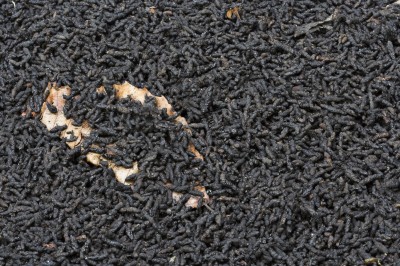






Compost tea is an extract of compost combined with de-chlorinated water containing beneficial microorganisms that has been used for centuries to encourage soil and plant health. The organic matter and its accompanying organisms chosen are of primary concern when making a nutrient rich compost tea. Clean compost and worm castings used solely or in conjunction are common tea bases, but you can also try making a bat guano tea mix.
Using bat manure for compost tea is one of the most nutrient and microorganism rich options. Bat dung is harvested dry after it has been composted by guano beetles and microbes and is obtained from only the insect and fruit feeding species. It can be worked directly into the soil as an incredible rich, non-malodorous fertilizer or converted into an extremely beneficial bat manure compost tea.
Using bat guano tea has the benefit of not only nourishing the soil and plants, but also has been said to have bioremediation properties. Simply put, this means that the bat dung can aid in cleansing soils made toxic by the application of pesticides, herbicides, and chemical fertilizers. Using bat guano tea on foliage aids in the prevention of fungal diseases as well.
Used as a fertilizer, bat guano provides a higher concentration of nutrients than many other types. The NPK ratio of bat dung is a concentration of 10-3-1, or 10 percent nitrogen, 3 percent phosphorous and 1 percent potassium. Nitrogen facilitates rapid growth, phosphorus pushes healthy root systems and bloom development, and potassium aids in a plant’s general health.
Bat guano tea is suitable for a wide variety of plants and is simple to make. A simple bat guano tea recipe consists of one cup of dung per gallon of non-chlorinated water. Chlorine in water kills beneficial microbial life, so if you have city water that is chlorinated, just leave it in an open container for several hours or overnight to allow the chlorine to naturally dissipate. Mix the two together, let sit overnight, strain and apply directly to your plants.
Other bat guano tea recipes can be found all over the Internet. They can get more complex by adding additional ingredients such as unsulfured molasses, fish emulsion, worm castings, seaweed concentrate, humic acid, glacial rock dust and even specific species of bat guano — such as Mexican, Indonesian or Jamaican dung.
As a foliar spray, apply the bat guano tea using a fine mist either in the early morning or pre-dusk. For root application, apply at the root zone followed by watering in to facilitate nutrients into the root system. Bat guano tea is not a fertilizer, but promotes a healthy biologically diverse soil with more efficient nutrient absorption, thereby eventually reducing the amount of fertilizer needed and promoting overall healthier plants. Use the bat guano tea as soon as possible. It will lose its nutritive power even as soon as overnight, so use it right away.
Copyright © www.100flowers.win Botanic Garden All Rights Reserved